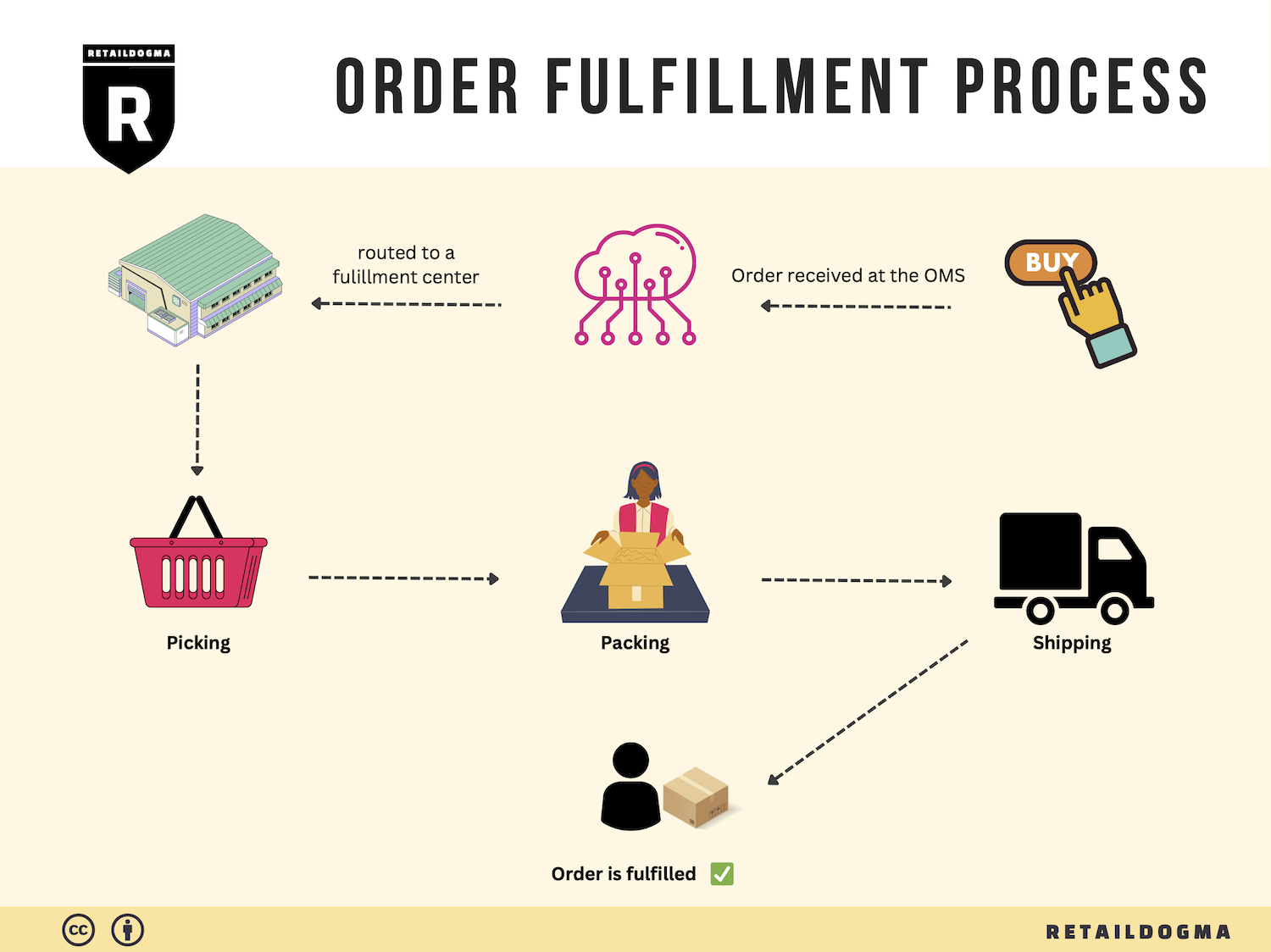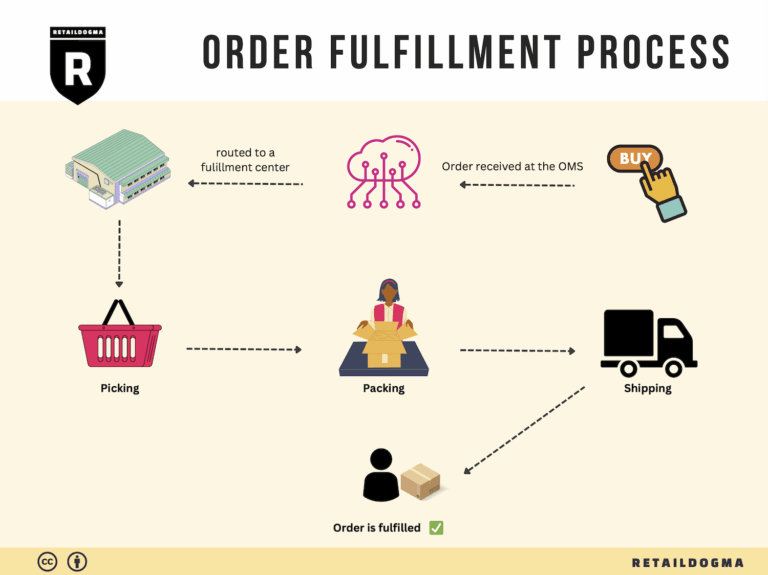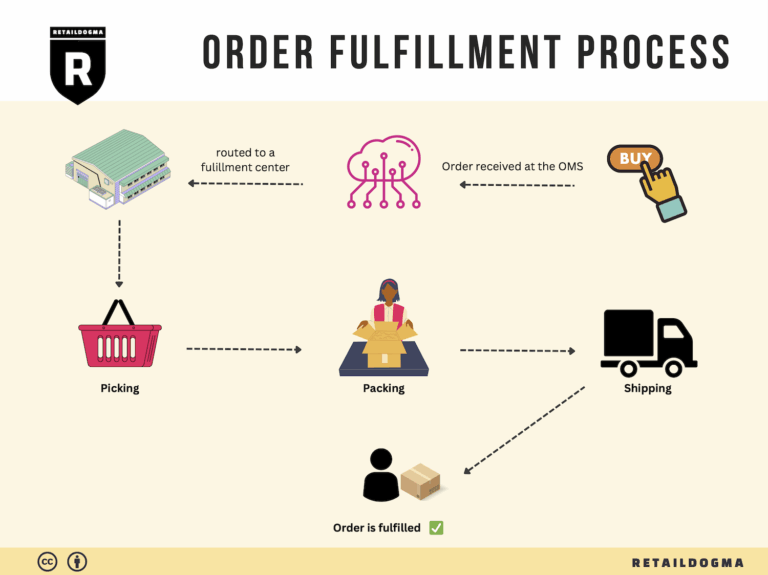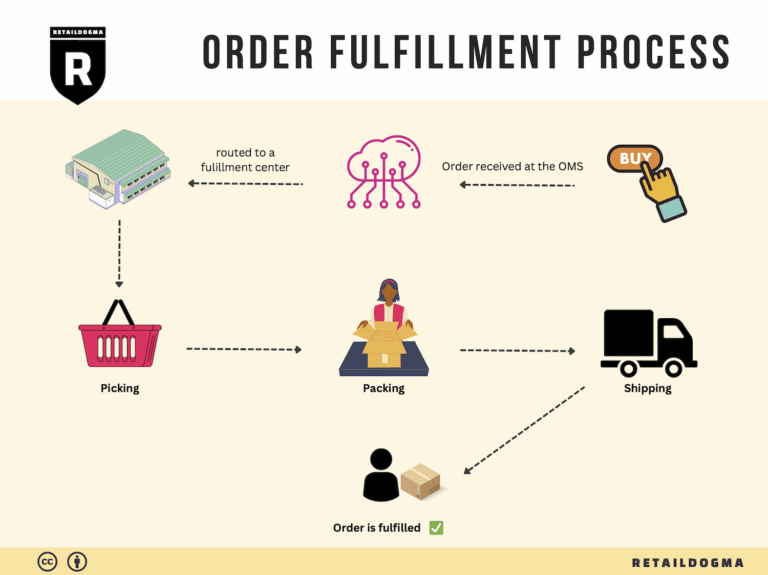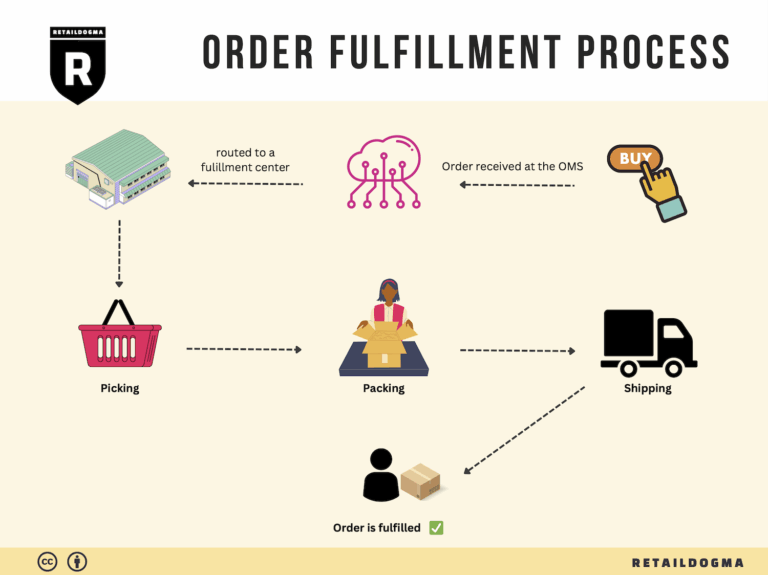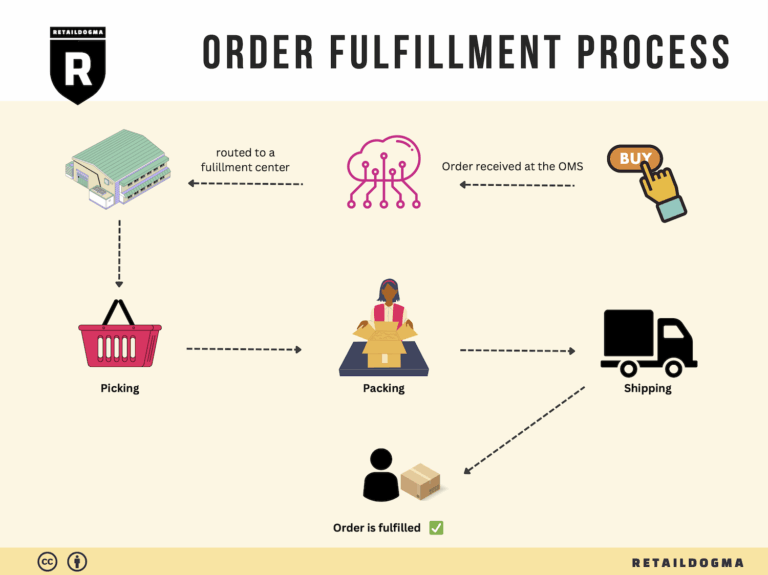What Is A Fulfillment Center? A Complete Guide (2025)
What is E-commerce Fulfillment? An Introduction for Growing Businesses
Understanding E-commerce Fulfillment
As an e-commerce business owner, the excitement of making sales can quickly turn into stress when it comes to packing and shipping orders. If you’ve found yourself overwhelmed by the logistics of getting products to your customers, you’re not alone. For many growing businesses, fulfillment—the process of receiving, processing, and delivering orders—can become a significant pain point. Efficient fulfillment is essential not only for customer satisfaction but also for the overall growth of your business.
In simple terms, fulfillment involves every step necessary to get a product from your inventory into the hands of your customers. This includes picking items from your warehouse, packing them securely, and shipping them out for delivery. However, as your business scales, managing these operations in-house can become cumbersome, leading to delays, errors, and frustrated customers.
This guide aims to demystify the world of e-commerce fulfillment and provide you with the knowledge needed to navigate this critical aspect of your business. We’ll explore various fulfillment models, including Third-Party Logistics (3PL) and Fulfillment by Amazon (FBA), so you can understand which option best suits your needs.
Core Services and Considerations
We’ll also delve into the core services that fulfillment partners offer, such as inventory management, order processing, and shipping logistics. Understanding these services will empower you to make informed decisions about which elements of fulfillment you can manage yourself and which are best left to experts.
Choosing the right fulfillment partner is crucial. This guide will outline key factors to consider when selecting a logistics provider, such as scalability, technology integration, and customer service capabilities. Additionally, we will break down pricing structures to help you anticipate costs and budget effectively.
Empowering Smart Logistics Decisions
The ultimate goal of this guide is to equip you with the insights necessary to make smart, strategic decisions about your logistics and fulfillment processes. By optimizing your fulfillment strategy, you can enhance customer satisfaction, streamline operations, and focus on what you do best: growing your business. Whether you’re just starting out or looking to scale, understanding e-commerce fulfillment is essential for long-term success.
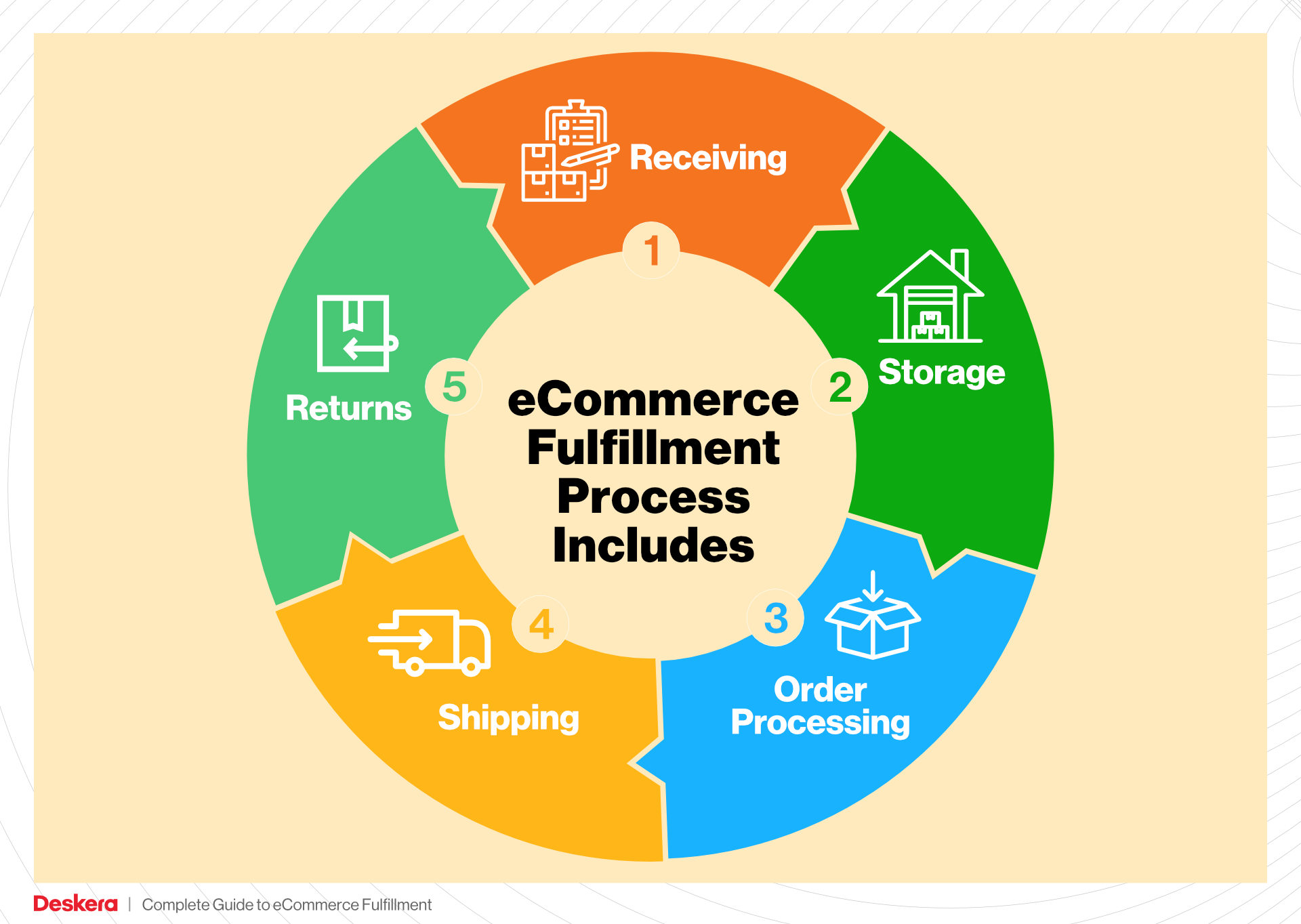
What You’ll Learn In This Guide
- What is E-commerce Fulfillment? An Introduction for Growing Businesses
- The Order Fulfillment Process: From ‘Buy’ Button to Customer’s Door
- Comparing Fulfillment Models: In-House vs. 3PL vs. Dropshipping
- A Deep Dive into Amazon FBA: Pros, Cons, and Who It’s For
- Core Services Offered by Fulfillment Centers
- How to Choose a Fulfillment Partner: A 6-Point Checklist
- Understanding Fulfillment Pricing: A Breakdown of Common Fees
- Frequently Asked Questions (FAQs) about Fulfillment
- Conclusion: Is Outsourcing Fulfillment the Right Move for Your Business?
- Important Disclaimer
The Order Fulfillment Process: From ‘Buy’ Button to Customer’s Door
1. Receiving Inventory
The order fulfillment process begins with receiving inventory, a critical step that sets the foundation for effective logistics. Upon arrival at the fulfillment center, products are unloaded and inspected for quality and accuracy against purchase orders. This step is essential to ensure that the correct items are received and that they are in good condition, minimizing returns and customer dissatisfaction.
During this phase, each product is assigned a Stock Keeping Unit (SKU), a unique identifier that helps track inventory throughout the fulfillment process. Proper inventory management practices, such as accurate data entry and systematic checks, help maintain stock levels and prevent discrepancies. A well-executed receiving process not only enhances inventory accuracy but also sets the stage for efficient storage and picking later in the fulfillment journey.
2. Warehouse Storage
Once the inventory is received and verified, the next step is warehouse storage. Items are strategically placed in designated storage areas within the fulfillment center. The layout of the warehouse plays a vital role in optimizing space and ensuring efficient access to products when orders are picked.
In the case of Amazon’s BOS7 fulfillment center, which handles large and atypical items, storage is often organized based on item dimensions and weight rather than conventional slotting optimization. This approach emphasizes maximizing storage capacity, allowing for a diverse range of products to be stored effectively. Efficient warehouse storage not only facilitates quick access to products but also supports inventory turnover, reducing holding costs and improving overall operational efficiency.
3. Order Picking
Order picking is the process of selecting items from storage to fulfill customer orders. This step is crucial as it directly impacts order accuracy and fulfillment speed. Effective picking strategies, such as using pick lists, can streamline this process by guiding workers to the correct locations within the warehouse.
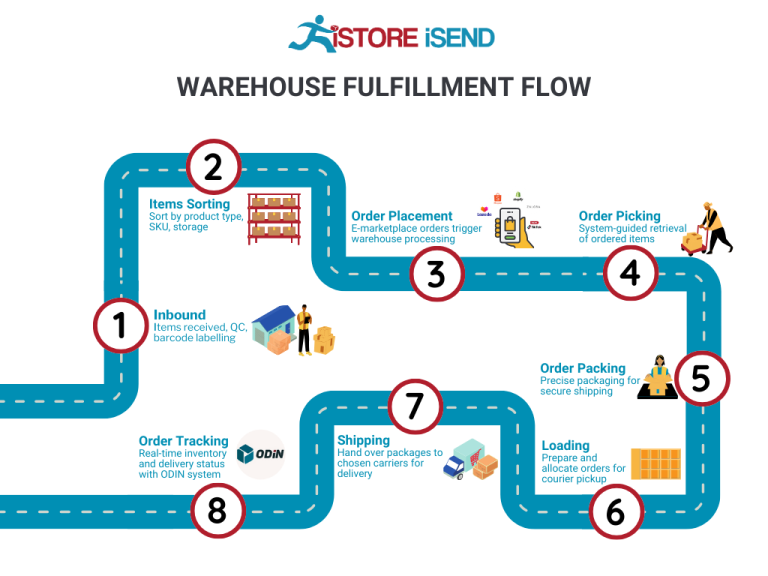
At fulfillment centers like BOS7, where large items are common, workers may utilize specialized equipment, such as very narrow aisle lifts, to navigate through high racking systems. While manual operations dominate this step, selective automation can enhance safety and accuracy. The efficiency of the picking process can significantly affect customer satisfaction, as timely and correct order fulfillment leads to positive buying experiences and repeat business.
4. Order Packing
After items are picked, they move to the order packing stage. This step involves securely packaging products to ensure they arrive at the customer’s door in perfect condition. Packing is not merely about wrapping items; it also involves selecting the appropriate packaging materials and sizes, which can help minimize shipping costs and reduce waste.
During this phase, packers often utilize packing slips and shipping labels to ensure that the correct items are sent to the right customers. In the BOS7 facility, items are directed to a high-speed sliding shoe sortation system that efficiently organizes products for packing. A well-executed packing process minimizes damage during transit and enhances the overall customer experience, which is crucial for building brand loyalty.
5. Shipping & Delivery
The final step in the order fulfillment process is shipping and delivery. Once packed, orders are loaded onto delivery trucks or handed over to carriers for distribution. This stage is vital for meeting customer expectations regarding delivery times, especially during peak seasons or promotional events.
Effective shipping logistics involve optimizing routes and managing carrier relationships to ensure timely deliveries. With the rise of e-commerce, businesses must stay competitive by offering various shipping options, including same-day or next-day delivery, to meet consumer demands. The fulfillment center’s operational efficiency, such as that seen at BOS7, directly impacts delivery speed and reliability, ultimately influencing customer satisfaction and repeat purchases.
In summary, understanding and optimizing each step in the order fulfillment process—from receiving inventory to shipping and delivery—can significantly enhance an e-commerce business’s operational efficiency and customer satisfaction. By leveraging key practices and technologies at each stage, businesses can scale effectively and compete in the fast-paced world of online retail.
Comparing Fulfillment Models: In-House vs. 3PL vs. Dropshipping
Fulfillment Model Comparison
| Model | Who Handles Inventory | Best For (Business Stage) | Key Advantage | Key Disadvantage |
|---|---|---|---|---|
| In-House Fulfillment | Business itself | Established businesses with stable sales volume | Full control over inventory and operations | High overhead costs and complexity in management |
| Third-Party Logistics (3PL) | External provider | Growing businesses and startups | Scalable solutions with expertise in logistics | Less control over inventory and potential service variability |
| Dropshipping | Supplier | New businesses or those with limited capital | Low upfront investment and minimal risk | Lower profit margins and reliance on supplier reliability |
In-House Fulfillment
In-house fulfillment means that a business manages its own inventory and logistics operations. This model is typically best suited for established businesses that have a stable sales volume and sufficient resources to maintain their own warehouse and fulfillment processes. The key advantage of in-house fulfillment is the complete control over inventory management, order processing, and customer service. Businesses can tailor their fulfillment processes to meet specific needs, allowing for greater flexibility and responsiveness to customer demands. However, this model comes with significant disadvantages, such as high overhead costs associated with warehousing, staffing, and maintaining logistics technology. Additionally, managing fulfillment operations can be complex and time-consuming, potentially diverting focus from core business activities.
Third-Party Logistics (3PL)
Third-party logistics (3PL) involves outsourcing fulfillment operations to an external provider. This model is ideal for growing businesses and startups that need scalable solutions without the burden of managing logistics in-house. A key advantage of using a 3PL provider is access to their expertise and established infrastructure, which can help improve efficiency and reduce shipping costs. 3PLs typically offer flexible options that can be adjusted based on seasonal demand, making them an attractive choice for businesses experiencing growth or fluctuations in sales. On the downside, 3PLs can introduce challenges related to inventory control and service consistency. Businesses may find they have less direct oversight of their inventory and fulfillment processes, which can lead to potential variability in service quality and customer experience.
Dropshipping
Dropshipping is a fulfillment model where a retailer does not hold inventory but instead relies on suppliers to ship products directly to customers. This model is particularly advantageous for new businesses or those with limited capital, as it requires minimal upfront investment. Retailers can offer a wide range of products without the risk of unsold inventory, making it a low-risk option for those testing new markets or product lines. The primary disadvantage of dropshipping is the typically lower profit margins due to the reliance on suppliers, who take a cut of the sale. Additionally, the retailer is dependent on the supplier’s reliability for order fulfillment, which can impact customer satisfaction if there are issues such as stock shortages or shipping delays. Overall, while dropshipping offers flexibility and ease of entry into e-commerce, it demands careful supplier management to ensure a positive customer experience.
Conclusion
Choosing the right fulfillment model is crucial for the success of any e-commerce business. Each model—whether in-house fulfillment, 3PL, or dropshipping—has its unique advantages and challenges. Established businesses with the resources may benefit from in-house fulfillment, while growing businesses might find that partnering with a 3PL provider offers the scalability and expertise they need. New entrepreneurs, on the other hand, might prefer the low-risk nature of dropshipping, despite its lower margins and reliance on suppliers. Ultimately, the decision should align with the business’s growth stage, operational capabilities, and long-term strategic goals.
A Deep Dive into Amazon FBA: Pros, Cons, and Who It’s For
Understanding Fulfillment by Amazon (FBA)
Fulfillment by Amazon (FBA) is a service offered by Amazon that allows e-commerce sellers to store their products in Amazon’s fulfillment centers. Amazon takes care of storage, packaging, shipping, and customer service on behalf of the sellers, enabling them to focus on other aspects of their business, such as product development and marketing. When a customer places an order, Amazon picks, packs, and ships the products directly to the customer, often providing two-day shipping for Prime members.
How FBA Works
-
Product Listing: Sellers create product listings on Amazon and choose the FBA option. They then ship their inventory to Amazon’s fulfillment centers.
-
Storage: Once the inventory arrives at the fulfillment center, Amazon stores the products until they are sold. Sellers can track their inventory levels through their Amazon Seller Central account.
-
Order Processing: When a customer orders a product, Amazon’s system automatically processes the order. The product is picked from the shelf, packed, and shipped to the customer.
-
Customer Service: Amazon handles customer inquiries, returns, and refunds for FBA products, allowing sellers to maintain a high level of customer satisfaction without managing these processes themselves.
-
Payment: After the product is sold, Amazon deposits the sale proceeds into the seller’s account, deducting any applicable fees associated with the FBA service.
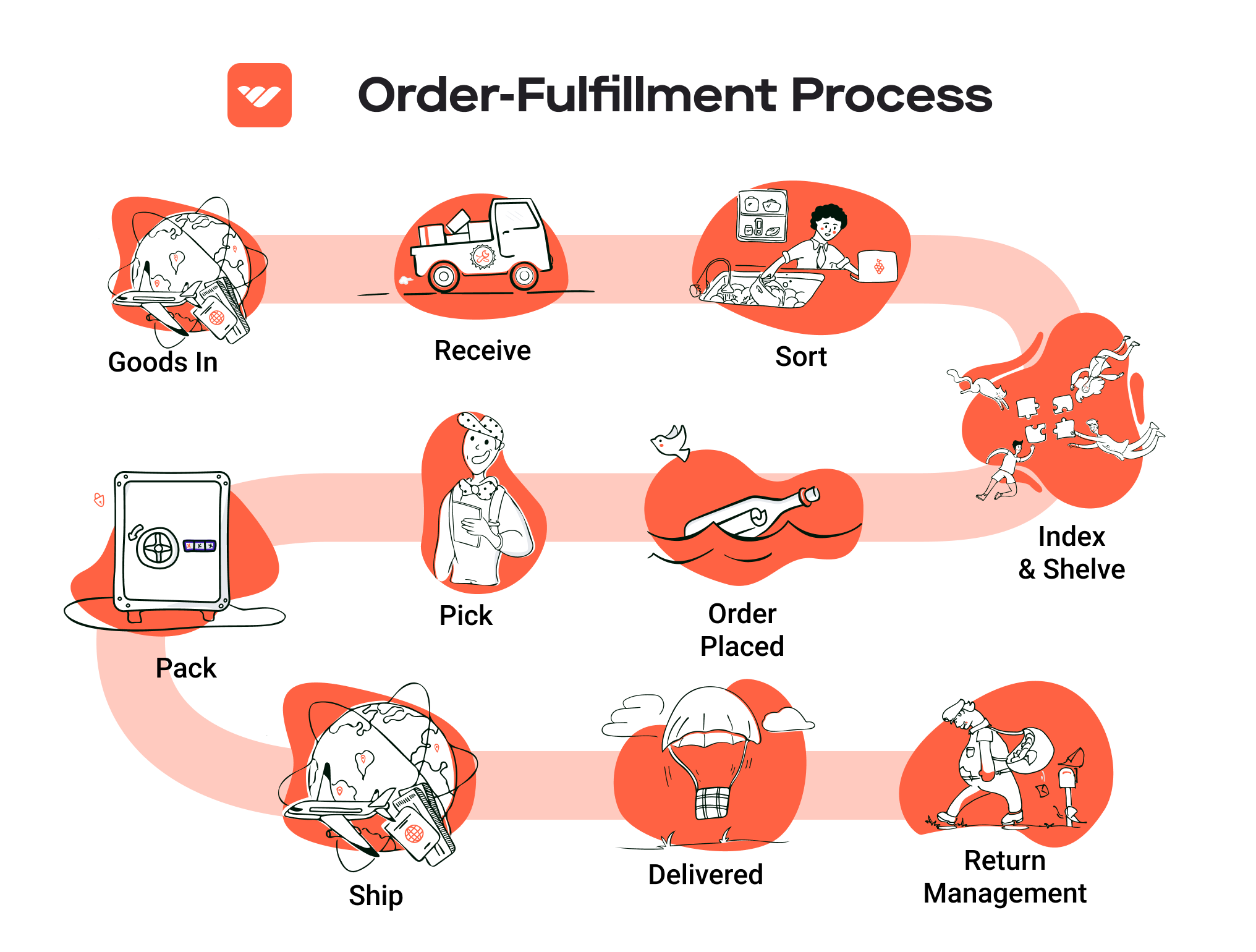
Pros of FBA
Prime Eligibility
One of the most significant advantages of using FBA is the ability to offer products with Amazon Prime eligibility. This can significantly increase visibility and sales, as Prime members tend to prefer products that offer fast and free shipping.
Customer Trust
Products fulfilled by Amazon benefit from Amazon’s brand trust. Customers are often more willing to purchase from sellers who use FBA, knowing that Amazon handles their orders and provides reliable customer service.
Multi-Channel Fulfillment
FBA isn’t limited to sales on Amazon alone. Sellers can use FBA to fulfill orders from other sales channels, such as their own websites or other online marketplaces. This flexibility allows businesses to streamline their operations and manage inventory more effectively.
Scalability
FBA allows sellers to scale their businesses without the need for additional warehousing and logistics infrastructure. As sales grow, sellers can simply send more inventory to Amazon’s fulfillment centers.
Time Savings
By outsourcing fulfillment and customer service, sellers can save significant time and resources, allowing them to focus on other business-critical tasks.
Cons of FBA
High Fees
While FBA provides many benefits, it comes with its own set of fees that can eat into profit margins. Sellers must pay for storage, fulfillment, and additional services, which can add up quickly, especially for those with lower-priced items or slow-moving inventory.
Strict Inventory Rules
Amazon enforces strict inventory management rules, including limitations on storage space and requirements for inventory performance metrics. Sellers must ensure their products meet these standards to avoid penalties, such as long-term storage fees or removal of inventory.
Commingling Risks
FBA products may be commingled with inventory from other sellers. This means that if a customer receives a defective or subpar product, it can lead to negative reviews that affect all sellers with similar products. Sellers may have less control over the quality of the items they sell through FBA.
Limited Control Over Fulfillment
Sellers relinquish control over the fulfillment process when using FBA. This can lead to issues with shipping times, order accuracy, and inventory management, especially if there are problems at the fulfillment center.
Dependency on Amazon
Relying heavily on FBA can create a dependence on Amazon’s ecosystem. Changes in Amazon’s policies, fees, or algorithms can significantly impact a seller’s business, making it crucial for sellers to diversify their sales channels.
Who is FBA Best For?
Fulfillment by Amazon is particularly well-suited for:
-
Small to Medium-Sized Businesses: Businesses looking to scale quickly without investing heavily in logistics can benefit significantly from FBA’s infrastructure.
-
Sellers with High Volume and Fast-Moving Products: Sellers with popular products that have high turnover rates can offset FBA fees with increased sales volume.
-
E-commerce Entrepreneurs: New sellers who want to tap into Amazon’s vast customer base and leverage its logistical capabilities can find FBA an attractive option.
-
Sellers Seeking Convenience: Businesses that prefer to focus on product sourcing and marketing rather than logistics and fulfillment may find FBA to be a practical solution.
-
Multi-Channel Sellers: Those who sell on multiple platforms and want a streamlined fulfillment process will benefit from FBA’s multi-channel capabilities.
In conclusion, Fulfillment by Amazon can be a powerful tool for e-commerce sellers looking to streamline their operations and tap into Amazon’s vast customer base. However, it is essential to weigh the pros and cons carefully, considering factors such as fees, inventory management, and control over the fulfillment process. By understanding how FBA works and who it best serves, sellers can make informed decisions that align with their business goals and growth strategies.
Core Services Offered by Fulfillment Centers
Inventory Management & Warehousing
Inventory management and warehousing are foundational services provided by fulfillment centers that ensure efficient storage and organization of products. This process involves the systematic tracking of inventory levels, orders, sales, and deliveries, allowing businesses to maintain optimal stock levels and avoid overstock or stockouts.
Benefits:
1. Real-Time Visibility: Modern fulfillment centers utilize advanced inventory management systems that provide real-time data on stock levels. This visibility helps e-commerce businesses make informed decisions regarding inventory replenishment and demand forecasting.
-
Space Optimization: Fulfillment centers, like Amazon’s BOS7, are designed to maximize storage capacity. With sophisticated racking systems and space-saving techniques, they can accommodate a wide range of product sizes, from small items to large, atypical goods.
-
Cost Efficiency: By outsourcing inventory management to a fulfillment center, e-commerce businesses can save on overhead costs associated with maintaining their own warehouses, such as rent, utilities, and labor.
-
Scalability: As a business grows, its inventory needs can change rapidly. Fulfillment centers offer the flexibility to scale operations up or down, accommodating seasonal fluctuations and growth spurts without the need for significant investment in infrastructure.
Pick and Pack Services
Pick and pack services refer to the process of retrieving items from inventory (picking) and preparing them for shipment (packing). This service is crucial for e-commerce businesses that require quick and accurate order fulfillment.
Benefits:
1. Speed and Accuracy: Fulfillment centers employ trained staff and automated systems to ensure that orders are picked and packed efficiently. This minimizes errors and enhances customer satisfaction through timely deliveries.
-
Custom Packaging: Many fulfillment centers offer custom packing options, allowing businesses to brand their packaging or use specific materials that enhance the customer experience. This can lead to increased customer loyalty and repeat purchases.
-
Order Consolidation: Fulfillment centers can combine multiple items from different orders into a single shipment, reducing shipping costs and improving delivery times. This is particularly beneficial for businesses with high order volumes.
-
Quality Control: Implementation of quality checks during the pick and pack process helps identify discrepancies before orders are shipped, reducing returns and enhancing the overall customer experience.
Kitting and Assembly
Kitting and assembly services involve grouping different products into a single package or assembling products before shipping. This is particularly useful for businesses that sell products that are often bundled together or require assembly.
Benefits:
1. Enhanced Product Offerings: By offering kitting services, e-commerce businesses can create value-added bundles that appeal to customers. For instance, a retailer could bundle a fishing rod with tackle and bait, making it more convenient for consumers.
-
Reduced Time to Market: Kitting and assembly streamline the fulfillment process by reducing the time needed to prepare products for sale. This can be particularly advantageous during peak seasons when speed is crucial.
-
Inventory Management Efficiency: Kitting allows businesses to manage inventory more effectively by tracking bundled items as a single SKU. This simplifies stock management and can reduce holding costs.
-
Customization Options: Fulfillment centers can accommodate custom kitting requests, allowing businesses to tailor their offerings based on customer preferences or promotional campaigns, thereby enhancing customer engagement.
Returns Management (Reverse Logistics)
Returns management, or reverse logistics, refers to the process of handling returned products efficiently. This service is essential for e-commerce businesses, as returns are a common occurrence in online retail.
Benefits:
1. Streamlined Return Processes: Fulfillment centers provide a structured approach to processing returns, making it easier for customers to return items and for businesses to manage the return flow. This can enhance customer satisfaction and loyalty.
-
Restocking and Refurbishment: Returned items can be quickly assessed for restocking or refurbishment, allowing businesses to minimize losses associated with returns. Efficient returns management ensures that products are returned to inventory as quickly as possible.
-
Data Insights: Analyzing return data can provide valuable insights into customer preferences and product performance. Businesses can use this information to make informed decisions about product offerings and improve overall inventory strategies.
-
Cost Reduction: By outsourcing returns management to a fulfillment center, e-commerce businesses can reduce operational costs associated with handling returns, such as labor and processing time, allowing them to focus on core business activities.
In summary, the core services offered by fulfillment centers play a critical role in the success of e-commerce businesses. From inventory management to returns processing, these services not only streamline operations but also enhance customer satisfaction and drive growth. By leveraging the expertise of fulfillment centers, businesses can scale effectively while maintaining high service levels.
How to Choose a Fulfillment Partner: A 6-Point Checklist
Location & Warehouse Network
The location of your fulfillment partner’s warehouses is critical for ensuring timely delivery to your customers. A strategically placed fulfillment center minimizes shipping times and costs, which is especially important in today’s fast-paced e-commerce environment.
Key Questions to Ask:
– Where are your warehouses located, and how do they align with my target market?
– What is the average shipping time from each location to my primary customer areas?
– Do you have a network of warehouses that can support multi-channel distribution (e.g., e-commerce, retail)?
Technology & Integrations
In an increasingly digital world, the technology used by your fulfillment partner can significantly impact your operations. Robust technology not only streamlines the fulfillment process but also ensures accurate order tracking and inventory management.
Key Questions to Ask:
– What inventory management system do you use, and how does it integrate with my e-commerce platform?
– Do you provide real-time tracking for both inventory and shipments?
– How do you handle system outages or technical issues?
Specializations (e.g., Cold Storage, Oversized Items)
Different businesses have different fulfillment needs. Understanding the specializations of potential partners can help ensure that your unique requirements are met efficiently. For example, if you sell perishable goods, cold storage capabilities are essential.
Key Questions to Ask:
– What types of products do you specialize in handling?
– Do you have facilities equipped for special handling requirements, such as cold storage or oversized items?
– Can you accommodate seasonal fluctuations in inventory or order volume?
Scalability & Capacity
As your business grows, your fulfillment needs will likely change. It’s crucial to choose a partner that can scale with you, whether that means accommodating increased order volumes, expanding product lines, or entering new markets.
Key Questions to Ask:
– How do you handle increased order volumes during peak seasons?
– What is your current capacity, and how easily can you scale operations?
– Are there any limitations on the types or quantities of products you can store and ship?
Pricing and Contracts
Understanding the pricing structure and contract terms is essential for maintaining healthy margins. Hidden fees can quickly erode profitability, so clarity in this area is critical.
Key Questions to Ask:
– What is your pricing model (e.g., per order, per item, storage fees)?
– Are there any additional fees I should be aware of, such as for returns or special handling?
– What are the contract terms, and is there flexibility for renegotiation as my business evolves?
Customer Support & Reviews
The quality of customer support can make or break your relationship with a fulfillment partner. Responsive and knowledgeable support is vital, especially when issues arise. Additionally, reviews and testimonials can provide insight into the partner’s reliability and performance.
Key Questions to Ask:
– What customer support channels do you offer (e.g., phone, email, chat)?
– How quickly can I expect a response to inquiries or issues?
– Can you provide references or reviews from current clients in my industry?
Conclusion
Choosing the right fulfillment partner is a pivotal decision for your e-commerce business. By carefully evaluating each of these six key areas—location, technology, specializations, scalability, pricing, and customer support—you can ensure that your fulfillment operations are set up for success. Taking the time to ask the right questions and gather detailed information will help you select a partner that not only meets your current needs but also supports your long-term growth strategy.
Understanding Fulfillment Pricing: A Breakdown of Common Fees
Initial Setup Fees
Initial setup fees are typically charged when a business begins utilizing a fulfillment center’s services. These fees cover the costs associated with onboarding, which may include account setup, integration with e-commerce platforms, and any necessary training or software configuration.
The calculation of initial setup fees varies among fulfillment centers. Some may charge a flat fee, while others may base it on the complexity of the integration or the number of SKUs (stock-keeping units) that need to be configured. For example, if your business has numerous products with unique packaging requirements, expect higher setup costs due to the additional time and resources needed for proper configuration.
Receiving Fees
Receiving fees are incurred when inventory arrives at the fulfillment center. This fee is associated with the labor and resources required to unload, inspect, and store your products.
Typically, receiving fees are calculated on a per-unit basis or per pallet. For instance, if you send a shipment of 100 boxes, you might pay a fee for each box received. In some cases, fulfillment centers may offer tiered pricing, where the cost per unit decreases with larger shipments, incentivizing bulk deliveries. Understanding how your products are packaged and the total volume can help you estimate these fees more accurately.
Storage Fees (per pallet/bin)
Storage fees are charged for the space your inventory occupies within the fulfillment center. These fees are typically calculated on a per-pallet or per-bin basis and can vary based on the size and weight of your products.
For example, a standard pallet might incur a monthly fee, while smaller items stored in bins may have a different rate. It’s important to note that storage fees can fluctuate based on seasonal demand; for instance, during peak seasons like the holidays, rates may increase due to higher volume and limited space availability. To manage storage costs effectively, consider optimizing your inventory turnover and only storing products that are likely to sell quickly.
Pick & Pack Fees (per item/order)
Pick & pack fees cover the costs of selecting items from storage, packing them into boxes, and preparing them for shipment. This fee is generally charged on a per-item or per-order basis.
For instance, if a customer orders three different products, you may be charged a fee for each item picked, plus an additional fee for the packing process. Some fulfillment centers also have minimum order fees, meaning that even if only one item is picked, a baseline fee will apply. This pricing model encourages businesses to consolidate orders to minimize fulfillment costs. Understanding your order patterns can help you strategize how to optimize these fees.
Shipping Fees
Shipping fees are one of the most significant costs associated with fulfillment services. These fees cover the transportation of goods from the fulfillment center to the customer. Shipping fees can vary based on several factors, including the destination, weight of the package, shipping speed, and the carrier used.
Most fulfillment centers offer various shipping options, ranging from standard ground shipping to expedited services. It’s essential to compare shipping rates and delivery times to choose the best option for your business model. Additionally, some fulfillment centers may offer discounted shipping rates based on volume, so understanding your shipping needs can help you negotiate better terms.
Conclusion: Tips for Getting an Accurate Quote
When seeking an accurate quote from a fulfillment center, consider the following tips:
-
Be Transparent: Provide detailed information about your products, including sizes, weights, and packaging requirements. This transparency helps fulfillment centers give you a more precise estimate.
-
Understand Your Needs: Assess your expected order volume, seasonal fluctuations, and specific requirements (like special handling or packaging). This knowledge will help you anticipate costs more effectively.
-
Request Itemized Quotes: Ask for a breakdown of all potential fees, including setup, receiving, storage, pick & pack, and shipping. An itemized quote allows for easier comparison between providers.
-
Inquire About Discounts: Discuss any available discounts for bulk shipments or long-term contracts. Many fulfillment centers offer incentives that can significantly reduce your overall costs.
-
Review Terms and Conditions: Carefully read the fulfillment center’s terms regarding storage duration, additional fees for long-term storage, and any penalties for underperformance. Understanding these details can prevent unexpected charges.
By taking these steps, you can ensure you have a clear understanding of fulfillment pricing and how it will impact your bottom line as you scale your e-commerce operations.
Frequently Asked Questions (FAQs) about Fulfillment
1. What is the Amazon Fulfillment Center BOS7?
The Amazon Fulfillment Center BOS7 is located in Fall River, Massachusetts, and is one of Amazon’s largest fulfillment centers in New England. Covering 1.3 million square feet and operating for 20 hours a day, it specializes in fulfilling large and non-conforming items that may not fit the criteria of Amazon’s more automated facilities.
2. How does BOS7 handle large and atypical items?
BOS7 is designed specifically to manage larger, heavier items that may not conform to standard automation processes. The facility uses a combination of manual operations and selective automation to ensure efficient retrieval and shipping of these items, including specialized storage solutions for awkwardly shaped products.
3. What technologies are used in BOS7?
While BOS7 employs some automation, such as sensors for safety and accuracy, it primarily relies on manual operations. Workers use narrow aisle lifts to navigate the facility’s high racking systems, which can reach up to 40 feet. The facility also features conveyor systems that assist in moving items to shipping docks.
4. What are the operating hours of BOS7?
The BOS7 fulfillment center operates for 20 hours a day, allowing a four-hour window for maintenance and upkeep. This extensive operating schedule is crucial for meeting high demand, especially during peak seasons.
5. What is the difference between a warehouse and a fulfillment center?
A warehouse primarily serves as a storage space for goods, while a fulfillment center focuses on the complete order process, including storage, picking, packing, and shipping directly to customers. Fulfillment centers are designed to streamline these processes to enhance delivery speed and efficiency.
6. What is a Third-Party Logistics Provider (3PL)?
A 3PL is a company that provides outsourced logistics services, which can include transportation, warehousing, and fulfillment. Businesses often partner with 3PLs to manage their supply chains more efficiently, allowing them to focus on core activities like sales and marketing.
7. How much do fulfillment services cost?
Fulfillment service costs can vary widely based on factors such as order volume, storage space, and specific services required (e.g., kitting, packaging). On average, businesses can expect to pay a combination of storage fees, picking and packing fees, and shipping costs, which can range from a few dollars to several dollars per order.
8. How does BOS7 manage inventory?
At BOS7, inventory management is less focused on slotting optimization and more on maximizing storage capacity. Items are stored based on availability and general dimensions rather than their sales velocity or proximity to complementary products.
9. What measures are taken to ensure safety at BOS7?
Safety measures at BOS7 include the use of tethered lifts for workers, automated sensors for equipment operation, and thorough training for employees. The facility’s design emphasizes clean and organized workspaces, contributing to a safer working environment.
10. How does Amazon ensure timely deliveries from BOS7?
Amazon utilizes a combination of strategic location, extensive infrastructure, and advanced logistics management to ensure timely deliveries from BOS7. The facility’s design allows for efficient processing of large volumes of orders, and its operational hours are optimized for meeting peak demand periods.
Conclusion: Is Outsourcing Fulfillment the Right Move for Your Business?
Evaluating the Benefits of Outsourcing Fulfillment
Outsourcing fulfillment can be a transformative decision for e-commerce businesses looking to scale efficiently. By leveraging a fulfillment partner, you can save valuable time that would otherwise be spent managing inventory, processing orders, and handling shipping logistics. This allows you to redirect your focus towards core business activities such as marketing, product development, and customer engagement, which are crucial for growth.
Additionally, partnering with a fulfillment service provides scalability. As your business grows, so does the complexity of your logistics. Fulfillment centers like Amazon’s BOS7 are designed to handle varying volumes of orders seamlessly, ensuring that you can meet customer demand without the strain of managing increased operational pressures. This scalability is especially beneficial during peak seasons, such as holidays, when order volumes can spike dramatically.
Moreover, fulfillment partners bring specialized expertise and advanced technologies to the table. They have established processes and systems that enhance efficiency, accuracy, and speed—key components that can significantly improve your customer satisfaction and retention rates. By utilizing a partner with industry knowledge, you gain insights into best practices, compliance, and innovative solutions that can further optimize your logistics.
Choosing the Right Partner
However, the success of outsourcing fulfillment hinges on selecting the right partner. It’s essential to evaluate their capabilities, technology stack, and experience in handling your specific product types. A strategic fit can mean the difference between operational efficiency and logistical headaches.
Take Action
If you’re contemplating whether outsourcing fulfillment is the right move for your business, start by conducting a thorough audit of your current shipping processes. Assess where bottlenecks occur, and identify areas for improvement. This exercise will help you determine if partnering with a fulfillment service could streamline your operations and support your growth objectives. Embrace the potential of outsourcing, and position your business for sustainable success.
Important Disclaimer
⚠️ Important Disclaimer
The information in this guide is for educational purposes. Fulfillment services, pricing, and platform features change frequently. Always conduct your own due diligence and consult with providers directly before making business decisions.
